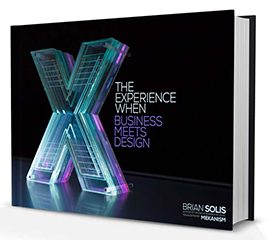I spent the day at Mercedes Benz Research and Development North America (MBRDNA) in Sunnyvale, California getting a full briefing on the state of the company’s EV, machine learning/AI and autonomous work. More on that soon. By the time I arrived home later that evening, thank you Guy Kawasaki for the ride, I received an email from Uber that it was set to debut a bold new autonomous pilot in San Francisco effective immediately.
Wait. What?
Wow.
Indeed. Uber is extending its current mapping and self-driving ride/hail pilot currently underway in Pittsburgh, Pennsylvania to the home of Uber itself…San Francisco. Now riders will have the opportunity to catch one of a small fleet of self-driving Volvo XC90s to their next destination.
That happened a lot sooner than I expected.
Now before we get too excited, let’s keep in mind that these are tests not the introduction of official self-driving services. Testing is critical to learn, break things, and advance the technology to accelerate safety and consistency. And while the car is technically driving itself most of the time, there is a specially trained driver ready to take control at any moment. There’s also an additional passenger who is tracking and analyzing real-time data to optimize performance along the way.
In a blog post announcing the program, Uber explained the benefits of testing in public, “Expanding our self-driving pilot allows us to continue to improve our technology through real-world operations. With its challenging roads and often varied weather, Pittsburgh provided a wide array of experiences. San Francisco comes with its own nuances including more bikes on the road, high traffic density and narrow lanes.”
This move didn’t arrive without controversy of course.
Immediately following the announcement, the California DMV claimed the test is illegal and issued the equivalent of a cease and desist.
The DMV requires a permit to test autonomous vehicles on public roads. Recently, it announced 20 companies were granted this special permit. Personally, I’ve been driven in a self-driving Mercedes as part of this program in Silicon Valley.
Uber believes its technology is exempt because it operates with a full-time driver.
Anthony Levandowski, head of Uber’s Advanced Technology Group, in a blog post published early Wednesday morning, “The rules apply to cars that can drive without someone controlling or monitoring them. For us, it’s still early days, and our cars are not yet ready to drive without a person monitoring them.”
The DMV disagreed. And to be fair, every self-driving test by any carmaker or technology provider on public roads includes a specially licensed driver behind the wheel at all times.
“It is illegal for (Uber) to operate its self-driving vehicles on public roads until it receives an autonomous vehicle testing permit. We have a permitting process in place to ensure public safety as this technology is being tested. Twenty manufacturers have already obtained permits to test hundreds of cards on California roads,” the DMV said. “Uber shall do the same.”
“Nope” appears to be Uber’s response. It continues to drive its pilot program in SF pedal to the metal.
The Self-Driving Uber Experience
So what’s it like to be a human guinea pig in Uber’s autonomous experiment? Most consumers report that it’s a bit anticlimactic. Why? Because there’s nothing really to report. The drive seems normal albeit without someone operating the steering wheel, gas or brake pedals or guiding the vehicle in most cases. The human driver takes over to ensure safety, which is strange to say. That’s why we’re going autonomous in the future after all. Humans make mistakes. For now however, so do computers. That’s the point of the test.
There have been some interesting reports though that reveal just how much self-driving cars need to practice and learn given the countless scenarios that drivers encounter on any given day.
Marisa Kendall with the Mercury News offered details of her “eventful ride” with a self-driving Uber.
Then the car encountered a parked truck that was blocking part of the lane. At the same time, a bird flew in front of its camera. It was too much — the car slammed on its brakes in the middle of the street, ceding control to its human driver.
Believe it or not, this is how the car learns. Each drive feeds a master repository to help it perform in complex conditions that human drivers consider second nature. Kendall also documented a complicated scenario where the car performed normally…
But the car also “saw” pedestrians and bicycles and waited for them to pass before making turns. It noticed when the light turned green and started moving on its own, and once swerved to miss a truck sticking out into the road.
Other reports documented a “robot” Uber running a red light, which made the headlines of course. However, that story was human error according to Snopes.
It’s meant to be an immersive experience that gives riders a glimpse of what happens behind the scenes. Uber provides a large touch screen in the back that displays the car’s route and a real-time rendered version of the what the car sees through its cameras and laser guidance systems. Uber also lets passengers take selfies using a camera facing the back seat. They can then email the picture to themselves and share on social media for all to see, like and share.
The Next Car You Buy Won’t Be a Car You Actually Buy
Uber is investing ghastly amounts of money to prove out its self-driving technology to compete against, well, everyone it seems. But it’s not doing so to simply operate as a sophisticated taxi or limo service. Uber wants to be your next car.
In its announcement of the San Francisco pilot, Uber was transparent in its intentions…
Creating a viable alternative to individual car ownership is important to the future of our cities. And to get there, we need to fuse our ridesharing network with world class self-driving software and hardware.
This is a controversial topic. It almost seems inconceivable that humans won’t own cars. But none of this will happen overnight. In fact, many car markers are betting on shared services, developing “Vehicles as a Service” (VaaS) programs that account for shared or on-demand ownership. Human and robot driven cars will co-exists for the foreseeable future. Nonetheless, these are exciting times and we may or may not be the ones driving ourselves toward our new future. Some of us might just recline the seat and let the car do the driving.
UPDATE: General Motors CEO Mary Barra announced on December 15th, 2016 that the automaker will begin testing self-driving vehicles on public roads in Michigan. Recently, Michigan Governor Rick Synder signed a package of bills that legalize operation of autonomous vehicles. The goal is to bring the spotlight back to Michigan as the beacon of automotive innovation. Additionally, Barra also announced that the Orion Township assembly plant will product its autonomous test vehicles in early 2017. This is the same plant where the all-electric Chevrolet Bolt is produced.
“We expect GM will become the first high-volume auto manufacturer to build fully autonomous vehicles in a mass production assembly plant,” Barra said during a press conference.
GM is already testing its fleet of 40 autonomous vehicles at its Technical Center campus in Warren, Mich as well as on public roads in San Francisco and Scottsdale, Ariz.
UPDATE 2: Uber still refuses to apply for a $150 permit to test self-driving cars citing “principle.” The company challenged the DMV to explain why Tesla’s Autopilot system doesn’t require a DMV permit.
UPDATE 3: The California Attorney General threatened action against Uber if it does not heed the DMV’s request. In a letter signed by CA Supervising Deputy Attorney Generals Miguel A. Neri and Fiel D. Tigno, “the Attorney General will seek injunctive and other appropriate relief.” if Uber does not pull its self-driving cars from San Francisco streets.
Please read X, The Experience When Business Meets Design or visit my previous publications
Connect with Brian!
Twitter: @briansolis
Facebook: TheBrianSolis
LinkedIn: BrianSolis
Youtube: BrianSolisTV
Snapchat: BrianSolis
Invite him to speak at your next event or meeting.







3 COMMENTS ON THIS POST To “Self-Driving Cars Drive Closer To Reality and Uber Is or Isn’t Behind the Wheel”